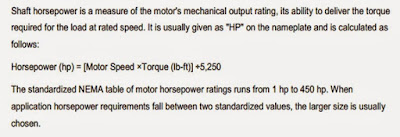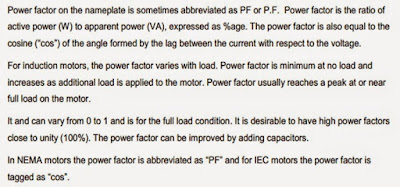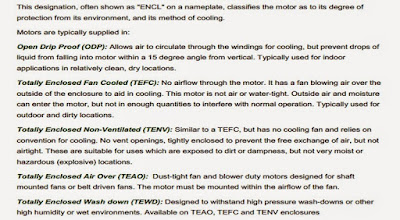Method of Skinning Electrical Wire
Removing the insulation in preparing the insulated conductors for making joints or splices, the insulation must first be removed from each conductor a proper distance depending upon the type of joint or splice to be made.
This process is called skinning or stripping.
Cleaning the Conductor
After removing the insulation, the wires must be thoroughly cleaned to ensure good electric contact between the ends of the wires so that the solder will adhere properly. The wire may be cleaned by scraping.
Types of taps, Splices and Joints of Conductor
Rat tail joints are used to join conductors in outlet boxes or when fixture leads are connected through conductors. The joints are made by skinning about 2 inches, the end of the conductor is to be joined. Then twist the bare conductors about six times.
Western Union Short tie splice - To make the splice, the wires are first skinned for about 3 inches at the ends. They are then placed in crossed position about 1 inch from the insulation. Four or five short turns are then wrapped on each side of the longest twist, and the free ends cut off and squeezed down closed to the straight position of the wire so that they will not extend over the surface of the short turns and permit the sharp to cut through the tape with the splice to be wrapped.
Western Union Long Tie Splice is used extensively for outside wiring and is quite similar to the short tie splice. It is also being used for interior wiring. The difference is that a number of long twist are made before wrapping the end turns. This is done so to withstand greater stress of pressure on the wire. The wire for this splice are bared about 4 ½ inches. They are then placed in the form of an X at a point midway between the insulation and the end of the base wire. Five or six long twists are then made and each side those turns are wrapped.
Britannia Splice is used in interior wiring where solid wires of No. 6 AWG gauge or larger sizes are to be joined and where large wire connectors or pliers are not at hand. The two wires are based for about 4 inches in a No. 6 wire. About ½ inch of the extreme end of each beat to almost a right angle to the straight portion of the conductor. A wrapping wire made of No. 18 bare wire copper is then cut to about 6 ft. in length and prepared by cleaning and bending in half. The large conductors are then laid together, one bent end pointing upward and the other downward. The center of the wrapping wire is then brought to the center of the conductor, one half of which is wrapped in one direction and other remaining half in the other as far as the best portion. The free ends are then forced through the grooves from one ends to the other end of the other of the large single conductors. The best ends are then cut off close to the joint.
Scarfed splice. It is used only on a large solid wire where there is an objection to the bulkiness of the Western Union or Britannia splice. The wires are bared for about 3 inches when a No. 6 wire is used.
The bared wire is then filed to a wedge shape starting about ½ inch from the insulations. A piece of No. 18 bare copper wire is cut to about 5 ft. in length and prepared by cleaning and bending in half.
The two file sides of the conductors are then laid together and wrapping wire wound around them as similarly done in Britannia Splice. The wrapping is completed by winding about six and seven turns of the free ends around the unfilled portion of the conductor.
Multiple wrapped cable splice is used more extensively on small strand wires and cables because these stands are more pliable and may be wound together without much difficulty. Large strands are rigid and require considerable time in making such a splice. To make the splice, the ends of the conductors are skinned at the distance of about 6 inches. The strands are cleaned and spread about apart. Next, the strands are cut about 3 inches from the insulation to right angle with the conductor. The strands of both conductors are then laced together, one group of strands wounds in the opposite direction. Care should be done that all strands in each group are wrapped simultaneously and parallel to one another.
Plain tap or Tee Joints is used to a great extent joining a tap or other conductor to a through conductor, as for example, a branch or main circuit. To make the joint, skin the tap wire about 2 inches and the main wire about 1 inch. Next, the wires are crossed intersecting about ¼ inch from the insulation of the tap wire and the main wire. A hook or sharp bend is then made in the tap and about five or six turns wound around the main wire. The joint is soldered and tape. Care must be taken that the solder flows and sticks through all the crevices and that the tape covers all part of the conductors, beginning and ending on the original insulation.
Knotted or loop, tap joint is very strong joint and will not untwist even enough strain is placed upon it. It is occasionally used in practice, particularly for temporary lighting systems, where time is not taken to solder joints. To make the join using No. 14 AWG wire, the tap wire is skinned about 3 inches and is then placed over the insulation of the tap and main wire. The tap wire is bent and hooked over the main wire and brought forward and bent over itself. Lastly, the remaining portion is wound into four or five short turns around the main wire.
Wrapped Tap, Tee Joint is used on large solid conductors where is difficult to wrap the heavy tap wire around the main wire. When a No. 6 AGW wire is used, both the main wire and the tap wire are skinned about 4 inches. The tap wire is bent into an L shape about ½ inches from the insulation so that it will rest along the side of the main wire. A wrapping wire is then prepared using size No. 18 bare conductors terminating beyond the bent of tap wire and up to the installation of the main conductor.
Ordinary Cable Tap or Tee Joint is used where large stranded wire or cables are tapped to a through conductor. To make the joint, the main strands should be scraped through with a knife blade or sandpaper. The tap wire of similar wire size cable should be skinned about 6 inches distance and the strands separated or fanned each strands of the tap into the shape. The main cable is placed into this V-shaped space and forced down to within 1 inch from the insulation of the tap conductor. One group of tap wires is then wound around the main conductor, each strands should be placed parallel to the other, and all wrapped at the same time and in one direction. The other group is wound in similar manner but in opposite directions.
Split Cable Tap or Tee Joint is used where stranded cables or wire are tapped to a through conductor. This joint is stronger than the ordinary cable tap and will not unwrap even though a strain is placed upon it prior soldering. To make this joint, the main wire is skinned a distance of 5 inches No. 14 American Wire Gauge (AWG) wire size is used and the strands thoroughly scraped as for the ordinary cable tap. The strands are next divided in half by forcing the screw driver through the center of the bared portion of the main wire. The tap wire is prepared by skinning it about 6 inches, scraping each strand until thoroughly cleaned and fanning out the strands so that they can be pushed around the space in the main wire. A space about 1 ½ inch should be left between the main wire and the insulation of the tap wire. In completing the joint, one group is wound around the main conductor, in one direction; and the second group is wound in the opposite direction.
The Through Fixture Joint is used where fixtures are connected to branch wires at an intermediate point. In making this joint, the end of one conductor is skinned about 2 inches and the other about 4 inches. At a point ¼ inches away from the insulation of the longer wire, three or four long twists are made similar to the rat-tail joint. The long bared portion of the long wire is bent over parallel with the free ends. Both free ends are then place alongside each other wrapped together around the straight bared portion.
Safety procedure in splicing and joining wire
Before the splice is made, the insulation is first removed on both ends with the use of an electrician’s knife or diagonal pliers. An electrician should be very careful in removing wire insulation in order that the wire will not be nicked by the knife or pliers to prevent breaking. However, a specially designed tool to avoid nicks is called automatic wire stripper. The function of the tool is to cut the wire insulation and remove it automatically by inserting the wire corresponding to the size of hole in the wire stripper. After removing the insulation, the end of the wire is twisted firmly. When the joint has been made, the correct practice is to solder it to prevent loose contact and to have a continuous flow of electricity. The splice and joint are then covered properly with an electrical tape in order to prevent short circuit.










































































